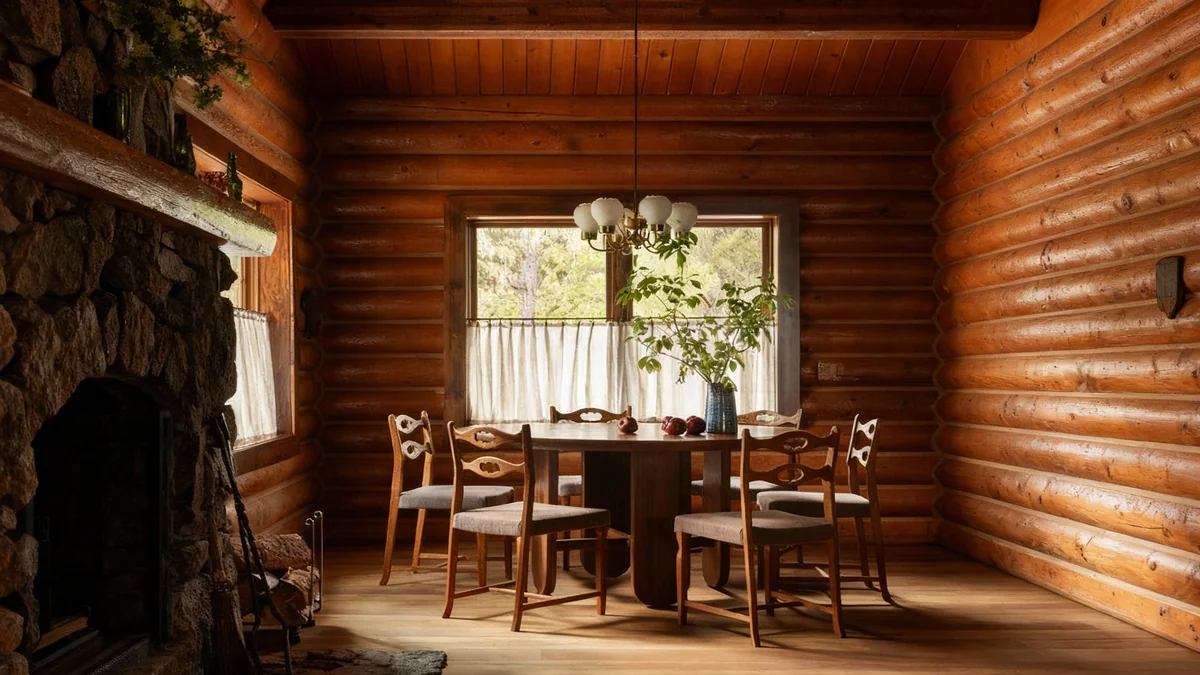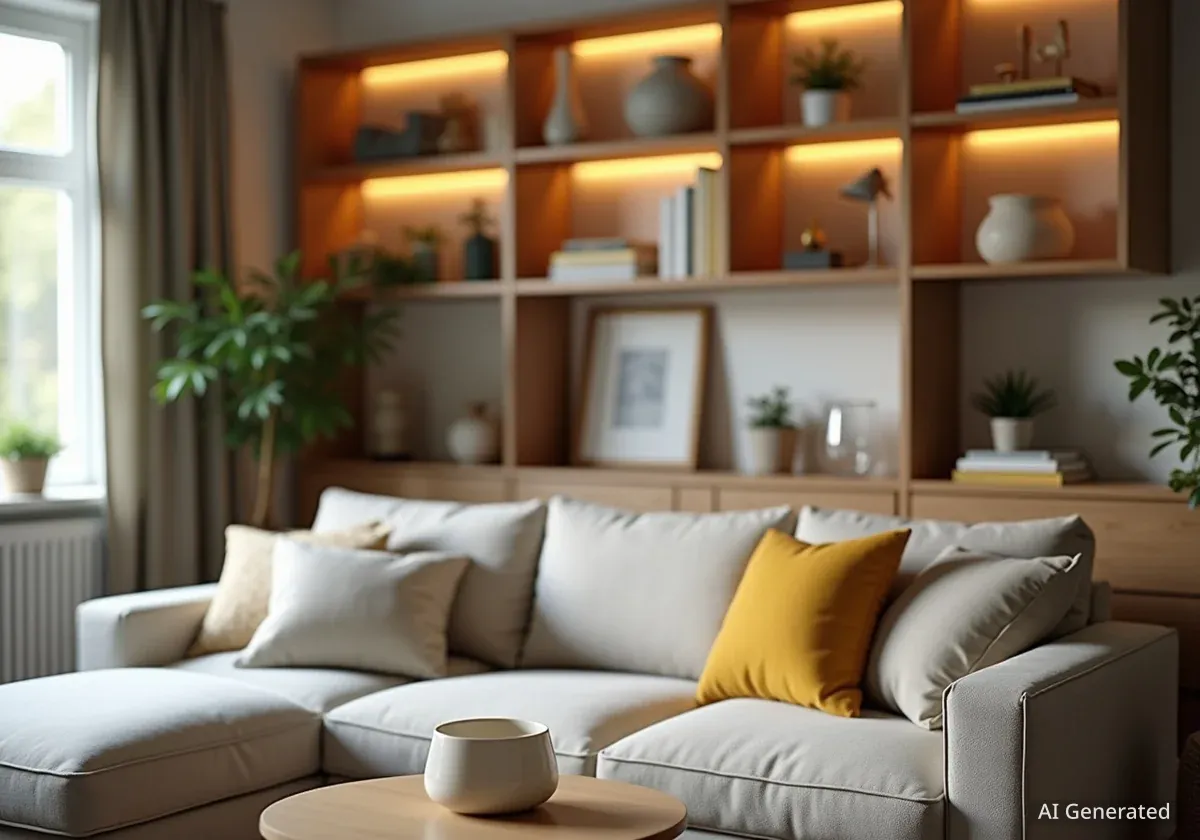A historic six-bedroom mansion in Newark's Forest Hill section, originally constructed in the 1920s for the son of a U.S. senator, has undergone a significant interior transformation. The property now features a vivid and contemporary design by renowned interior designer Sasha Bikoff, creating a unique fusion of historical architecture and modern aesthetics.
Key Takeaways
- A 1920s mansion in Newark's historic Forest Hill neighborhood has been fully restored.
- The home was originally built for Joseph L. Smith, the son of a prominent U.S. senator.
- The six-bedroom residence features a complete interior redesign by modern designer Sasha Bikoff.
- The project preserves the home's historic exterior while introducing a bold, contemporary style inside.
A Legacy Property in Forest Hill
Located in one of Newark's most distinguished neighborhoods, the mansion stands as a testament to the area's affluent past. The Forest Hill section, known for its grand, historic homes and proximity to the famous Branch Brook Park, was a desirable location for prominent families in the early 20th century.
The home was originally commissioned for Joseph L. Smith. His father, James Smith Jr., was a U.S. Senator from New Jersey and a significant political figure, which placed the family at the center of the state's social and economic life. The construction of such a substantial residence reflected the family's status and the architectural ambitions of the era.
The History of Newark's Forest Hill
The Forest Hill neighborhood was developed in the late 19th and early 20th centuries and is listed on the National Register of Historic Places. It is celebrated for its diverse collection of architectural styles, including Tudor, Colonial Revival, and Victorian homes, designed by respected architects of the period.
Properties from this period often feature robust construction, intricate details, and spacious layouts that are difficult to replicate in modern construction. This home is no exception, with its six bedrooms and generous living spaces providing a grand canvas for its recent redesign.
Architectural Preservation Meets Modern Vision
The restoration project took a unique approach by meticulously preserving the mansion's original exterior architecture while completely reimagining its interior. This strategy honors the historical character of the property and the Forest Hill neighborhood while adapting the living spaces for a contemporary lifestyle.
The decision to bring in interior designer Sasha Bikoff signals a deliberate move away from a traditional restoration. Bikoff is known for her bold, eclectic, and often colorful style that draws inspiration from various historical periods and cultural movements, reinterpreting them with a modern sensibility.
Who is Sasha Bikoff?
Sasha Bikoff is a New York-based interior designer recognized for her vibrant and maximalist aesthetic. Her work often blends antiques from different periods, such as French Rococo and mid-century modern, with contemporary art and bold color palettes. She gained widespread attention for her staircase design at the 2018 Kips Bay Decorator Show House.
Her involvement ensures that the interior is not a museum-like recreation of the 1920s but rather a dynamic and livable space that reflects current design trends. The result is a striking juxtaposition between the home's stately, historic shell and its lively, art-forward interior.
A Look Inside the Redesigned Mansion
The interior redesign transforms the home into a gallery of color, texture, and form. While specific details of every room are part of the private residence's appeal, Bikoff's signature style suggests a departure from muted, neutral tones in favor of a more expressive and daring palette.
The six-bedroom layout offers ample space for both private living and grand-scale entertaining. Key features of homes from this era typically include a formal entryway, a large living room, a dedicated dining room, and multiple fireplaces. The modern redesign likely uses these traditional spaces as a backdrop for contemporary furniture, custom textiles, and curated art pieces.
Key Design Elements
The philosophy behind this type of project often involves creating a dialogue between the old and the new. Design elements might include:
- Vibrant Colors: Using bold paint colors or wallpapers to highlight original architectural details like crown molding or window casings.
- Eclectic Furnishings: Mixing antique or vintage furniture with modern pieces to create a layered and personalized feel.
- Luxurious Textures: Incorporating rich materials like velvet, silk, and lacquer to add depth and sophistication.
- Modern Art: Displaying contemporary paintings and sculptures that contrast with the home's classic architecture.
The goal is to create a home that is both comfortable and visually stimulating, where every room tells a story. This approach respects the home's history without being confined by it.
The Enduring Appeal of Historic Homes
The restoration of the Smith mansion highlights a growing trend in real estate: the desire for properties with historical significance combined with modern amenities and design. Buyers are often drawn to the craftsmanship, character, and sense of history that older homes offer.
"Projects like this demonstrate how historic properties can be adapted for the 21st century without erasing their past. It's about creating a bridge between eras, making history relevant and livable for today's families."
However, these properties require a delicate balance. Updating plumbing, electrical systems, and climate control to modern standards is essential for comfort and safety. The challenge lies in integrating these updates without compromising the architectural integrity of the home.
This Newark mansion serves as a prime example of how that balance can be achieved. By investing in a high-concept interior design, the property is not just restored but reinvented, making it a unique piece of living history in the heart of Forest Hill.





